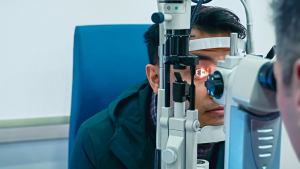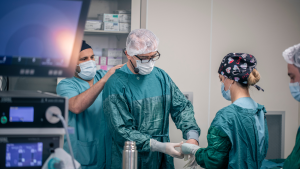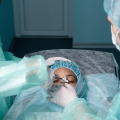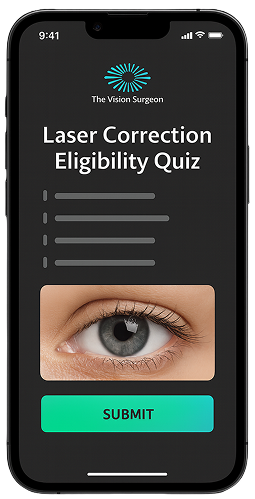Eye surgery has completely transformed how we treat and improve vision, offering life-changing results for people with various eye conditions. Medical technology advances make procedures safer, faster, and more effective than ever. The range of eye operations is vast, from simple outpatient laser surgeries to complex interventions like retinal detachment repair or corneal transplants. However, each type of surgery carries risks, benefits, recovery expectations, and eligibility criteria.
This comprehensive guide explores the most common types of eye surgeries, their purpose, what to expect during and after the procedure, and the possible complications.
Table of Contents
ToggleWhat is Eye Surgery?
Eye surgery, medically called ocular surgery, encompasses a wide range of procedures to diagnose, treat, or correct conditions affecting the eye and its surrounding structures. These operations are typically conducted by ophthalmologists, specialized eye doctors trained in medical and surgical care.
Eye surgery can range from minimally invasive procedures, like laser corrections for vision impairments, to complex interventions such as retina reattachments or complete eye removal due to trauma or tumors.
The goal of eye surgery varies based on the underlying condition. Some focus on restoring lost vision, while others may aim to prevent further deterioration, relieve pain, or enhance cosmetic appearance.
Modern advancements have introduced tools like femtosecond lasers, intraoperative OCT, robotic-assisted techniques, and AI-guided diagnostics, making procedures safer and more precise. As such, patients today benefit from better outcomes, shorter recovery periods, and reduced surgical risks.
Common Conditions Treated With Eye Surgery
A variety of ocular and visual disorders may necessitate surgical intervention, especially when non-surgical options such as medication, glasses, or therapy are insufficient.
Below are the most common medical conditions for which surgery is considered:
- Cataracts: Caused by protein build-up on the eye lens, leading to clouded or blurred vision. It typically affects the elderly, and surgery is often the only solution.
- Refractive Errors: These include nearsightedness (myopia), farsightedness (hyperopia), astigmatism, and presbyopia. Surgery reshapes the cornea or replaces the lens to allow light to focus on the retina properly.
- Glaucoma: A progressive condition marked by increased intraocular pressure that damages the optic nerve. Surgery may be required when medications and laser therapy fail.
- Retinal Diseases: These include retinal detachment, diabetic retinopathy, and macular degeneration. If not surgically corrected, these conditions can cause blindness.
- Corneal Disorders: These include keratoconus or corneal scarring, where corneal transplant or reshaping becomes necessary.
- Eye Trauma or Tumors: Injuries or malignancies can require emergency procedures, reconstruction, or eye removal.
- Strabismus & Ptosis: Conditions that impact eye alignment or eyelid function are often corrected surgically for medical and cosmetic reasons.
Types of Eye Surgeries
Below is a comprehensive breakdown of various eye surgeries, each with its specific purpose, method, and risk profile:
1. LASIK and Photorefractive Keratectomy (TransPRK)
LASIK (Laser-Assisted In Situ Keratomileusis) and TransPRK (Photorefractive Keratectomy) are popular refractive surgeries that correct common vision issues such as myopia (nearsightedness), hyperopia (farsightedness), and astigmatism. Both surgeries use an excimer laser to reshape the cornea, enabling light to focus correctly on the retina for clearer vision.
- LASIK involves creating a thin corneal flap with a microkeratome or femtosecond laser, lifting it, and then using a laser to reshape the underlying corneal tissue. The flap is then repositioned.
- TransPRK, on the other hand, does not involve a flap. Instead, the surface epithelial layer of the cornea is removed, and the underlying tissue is reshaped directly with the laser.
TransPRK typically has a longer recovery time and more initial discomfort than LASIK, but is safer for patients with thin corneas or those prone to dry eye. Both procedures have high success rates.
Also read: Understanding PRK Eye Surgery and Its Process
2. Cataract Surgery
Cataract surgery is one of the most commonly performed and safest surgical procedures globally. It becomes necessary when the eye’s natural lens becomes cloudy, causing blurred or dulled vision, often due to aging, diabetes, or trauma.
- The most common method is phacoemulsification, where an ultrasonic device breaks up the clouded lens, which is then removed through a small incision.
- A clear, artificial intraocular lens (IOL) is implanted to replace the natural lens and restore vision.
Different types of IOLs are available, including monofocal, multifocal, and toric lenses, the latter of which can correct astigmatism. Recovery is quick, with most patients experiencing improved vision within a few days and minimal discomfort.
Choosing the right lens can significantly impact visual outcomes, and consulting with an experienced eye surgeon like Mr. Hatch Mukherjee can help tailor the choice to individual needs.
3. Corneal Transplants (Keratoplasty)
A corneal transplant, or keratoplasty, replaces part or all of a damaged or diseased cornea with healthy donor tissue to restore vision, relieve pain, or repair trauma-related damage.
There are different types:
- Penetrating Keratoplasty (PK): A full-thickness corneal transplant for severely damaged corneas.
- DSEK (Descemet’s Stripping Endothelial Keratoplasty) and DMEK (Descemet Membrane Endothelial Keratoplasty) are partial-thickness transplants used primarily for diseases affecting the cornea’s inner layer.
While these procedures can restore significant vision, they carry risks like graft rejection, infection, and post-op astigmatism. However, with diligent follow-up and care, long-term outcomes are usually very favorable.
4. Vitrectomy
A vitrectomy involves surgically removing the vitreous humor—a clear gel that fills the eye’s center. It’s typically performed to access and treat conditions of the retina or inner eye structures.
Common indications include:
- Retinal detachment
- Diabetic retinopathy
- Macular holes or puckers
- Vitreous hemorrhage
During the procedure, the vitreous is replaced with a substitute like saline, gas, or silicone oil. This allows for retinal repair and relieves internal traction. Recovery varies, and patients may need to maintain a specific head position (often face-down) post-surgery for optimal healing.
5. Strabismus Surgery
Strabismus surgery corrects eye misalignment, a condition in which both eyes do not look in the same direction simultaneously. It is often diagnosed in children, but can also affect adults.
The procedure involves adjusting the eye muscles:
- Tightening or loosening specific muscles to improve alignment.
- It may be combined with Botox injections to temporarily weaken muscles during recovery.
Performed under general anesthesia, especially in children, the surgery significantly improves cosmetic appearance, binocular vision, depth perception, and self-confidence. Recovery is typically fast, with minor discomfort.
6. Glaucoma Surgery
When medications and laser therapies fail to control intraocular pressure (IOP) in glaucoma, surgical intervention is needed to prevent optic nerve damage and eventual blindness.
Standard surgical options include:
- Trabeculectomy: A flap is created in the sclera to form a drainage channel.
- Aqueous Shunt Implants (Tubes): Silicone tubes inserted into the eye to facilitate fluid drainage.
- MIGS (Minimally Invasive Glaucoma Surgery) includes procedures like iStent or Xen Gel Stent, which offer quicker recovery with fewer complications.
These surgeries aim to preserve existing vision, not restore lost sight. Post-procedure, close monitoring and lifetime management are often required.
7. Enucleation (Eye Removal)
Enucleation is the surgical removal of the entire eyeball and is typically a last resort. It is performed when the eye is:
- Irreversibly damaged by trauma
- Affected by intraocular tumors, such as retinoblastoma or ocular melanoma
- Causing uncontrollable pain in blind or diseased eyes
After removing the eye, a prosthetic implant can be placed to maintain the orbital structure. Later, a custom prosthetic eye may be fitted for aesthetic restoration. Although emotionally challenging, enucleation can dramatically improve quality of life or even be life-saving.
8. Surgery for Open Globe Injuries
Open globe injuries are severe and potentially sight-threatening traumas involving a full-thickness wound of the eye wall (cornea and/or sclera). These injuries require immediate surgical repair.
The surgical approach includes:
- Sealing the rupture
- Removing foreign material or debris
- Reconstructing and stabilizing internal structures, such as the lens or retina
Risks include infection, retinal detachment, and permanent vision loss. However, prompt surgery and aggressive postoperative care can help preserve the eye and optimize visual outcomes.
9. Cosmetic and Reconstructive Eye Surgery
These surgeries serve both functional and aesthetic purposes. They restore normal appearance or eye function after trauma, disease, or aging.
Common procedures include:
- Blepharoplasty: Removes excess eyelid skin and fat, improving vision and facial appearance.
- Orbital Decompression: Often done in patients with thyroid eye disease to relieve pressure and correct bulging eyes.
- Reconstructive surgery: Follows cancer removal, injury, or congenital anomalies to restore eyelid or orbital anatomy.
These surgeries can significantly boost self-esteem, relieve discomfort, and improve vision when excess tissue interferes with sight.
Pre-Surgery Preparations
Proper preparation before eye surgery is critical in minimizing complications and ensuring a successful outcome. Patients typically undergo a detailed preoperative evaluation to assess their eyes’ condition and overall health status.
- Comprehensive Eye Exam and Imaging: A thorough eye examination is performed, often including Optical Coherence Tomography (OCT), corneal topography, and ocular biometry. These tests provide essential eye structure and function data to guide surgical planning.
- Medication Review: Patients must discuss all current medications with their surgeon. Certain drugs, especially blood thinners like aspirin or warfarin, may need to be temporarily stopped to reduce the risk of bleeding during or after surgery.
- Medical Clearance: For individuals with chronic conditions such as diabetes, hypertension, or heart disease, medical clearance from a primary care physician or specialist is required to ensure that surgery is safe and systemic health is stable.
- Fasting Instructions: To reduce the risk of aspiration, patients are typically instructed to avoid food and drink for 6–12 hours before the procedure, particularly if sedation or general anesthesia will be used.
- Logistics and Support: It’s essential to arrange transportation to and from the surgical facility since patients won’t be able to drive post-surgery. Additionally, it’s advisable to have someone available to help during the initial recovery period.
- Informed Consent: Before the procedure, patients must sign a consent form acknowledging that they understand the risks, potential benefits, and alternative treatment options. This ensures transparency and shared decision-making.
What Happens During Eye Surgery?
Although techniques vary depending on the specific type of eye surgery (e.g., cataract, LASIK, retinal procedures), most follow a structured sequence to maintain safety and precision.
- Anesthesia: Local or topical anesthesia is usually administered to ensure patient comfort. In some cases, especially with complex surgeries or uncooperative patients, general anesthesia may be used.
- Sterilization and Eye Drape: The area around the eye is cleaned with antiseptic solution, and a sterile drape is applied to create a clean surgical field, minimizing the risk of infection.
- Surgical Access: The surgeon gains access to the relevant part of the eye using a microscope and precision tools. This may involve making tiny incisions in the cornea or sclera or using lasers to avoid cuts altogether.
- Correction or Repair: The main procedure is performed, which could involve removing a cloudy lens (cataract), reshaping the cornea (LASIK), repairing a detached retina, or implanting devices. High-magnification optics and delicate instruments are used to enhance accuracy.
- Closure and Dressing: Incisions may be self-sealing or require sutures, depending on the procedure. A protective shield or dressing protects the eye from dust, light, or accidental contact.
- Recovery Room Monitoring: After surgery, patients are moved to a recovery area where vital signs and initial healing are monitored. Once stable, they are discharged with post-operative instructions.
Post-Surgery Care and Recovery
The recovery period is crucial for healing and achieving the best visual results. Though instructions may vary based on the procedure, some general post-operative guidelines apply across most eye surgeries.
- Prescribed Eye Drops: Doctors usually prescribe antibiotic eye drops to prevent infection and anti-inflammatory drops to reduce swelling and discomfort. Adherence to the dosage schedule is essential.
- Activity Restrictions: For at least a few days after surgery, patients should avoid activities that can strain the eyes or increase pressure. These include lifting heavy objects, bending over, swimming, and rubbing the eyes.
- Follow-Up Visits: Scheduled appointments with the surgeon help monitor healing progress, detect complications early, and adjust medications or care plans as needed.
- Vision Changes: It’s common to experience blurry vision or mild discomfort during the first few days. Depending on the complexity of the procedure, vision often stabilizes over weeks or months.
- Protective Gear: Wearing an eye shield, especially while sleeping, prevents accidental rubbing or trauma. Sunglasses may also be recommended to protect the eyes from light sensitivity and UV exposure.
- Compliance with Instructions: Meticulously following the post-operative care plan is key to ensuring a smooth recovery. Ignoring guidelines can lead to infections, delayed healing, or surgical failure.
A dedicated care team like one at The Vision Surgeon can enhance recovery, providing detailed guidance and support through each phase of the healing process.
Risks and Complications of Eye Surgery
Despite its benefits, eye surgery, like all medical procedures, carries potential risks. Understanding these complications helps patients set realistic expectations and take swift action if issues arise.
- Infection (Endophthalmitis): Although rare, this is a serious condition in which bacteria enter the eye, potentially leading to severe inflammation and vision loss if not treated promptly.
- Bleeding (Hyphema): Blood may collect in the anterior chamber of the eye, especially after trauma or certain glaucoma surgeries, causing blurred vision and pressure buildup.
- Increased Intraocular Pressure (IOP): Eye pressure may spike after surgery, increasing the risk of optic nerve damage and requiring medication or additional treatment to control.
- Dry Eye or Tear Film Imbalance: Surgical disruption of corneal nerves can temporarily reduce tear production, leading to dryness, irritation, or the sensation of a foreign object in the eye.
- Double Vision or Glare: Some patients may experience visual disturbances, such as halos, glare, or diplopia, particularly in low-light conditions or after refractive surgery.
- Corneal Haze or Scarring: Scarring from surgery can cause corneal haze, particularly after surface ablation procedures, which affects visual clarity and may require additional management.
- Retinal Detachment or Vision Loss (Rare): In rare cases, the retina can separate from the underlying tissue after surgery, posing a serious risk to sight and requiring emergency treatment.
Understanding these risks helps patients make informed decisions and seek timely care if symptoms arise.
Conclusion
Eye surgeries have transformed the lives of millions by correcting vision, treating disease, and enhancing appearance. From standard procedures like LASIK and cataract surgery to more complex interventions like vitrectomy or corneal transplants, there’s a solution for almost every eye problem.
Suppose you’re considering vision correction or specialized eye surgery. In that case, The Vision Surgeon, led by renowned ophthalmologist Mr. Hatch Mukherjee, offers world-class care backed by cutting-edge technology and compassionate service. Whether you’re exploring laser eye surgery (LASIK, LASEK, TransPRK), lens replacement, or other vision correction procedures, The Vision Surgeon provides tailored solutions to all.
Take the first step toward better vision today. Book your consultation now.










